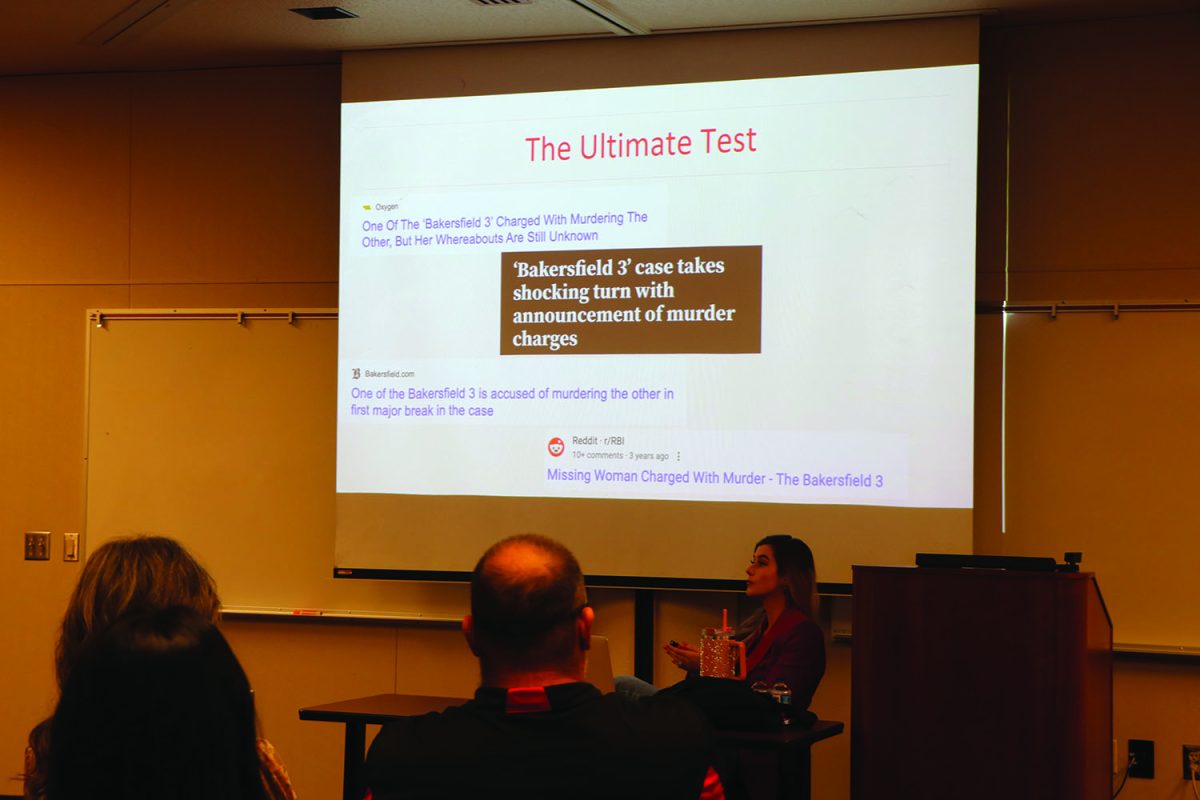Opioid dependence rises while treatment options continue to lack
September 20, 2019
Johnson and Johnson, one of the largest pharmaceutical companies in the world, recently lost a lawsuit against the state of Oklahoma for allegedly marketing their opioid prescriptions as beneficial to their patients and underplaying their dangers.
In Kern County alone, estimates show that at least 42,752 people misused opioids in 2016.
Nationwide, 70,237 people died from drug overdoses in 2017; 47,600 of those deaths were opioid-related.
In 2018, 91 people in Kern County died from an opioid overdose.
Johnson and Johnson was ordered to pay the state of Oklahoma $572 million to go into funding treatment for those suffering from opioid dependence, potentially creating a new path for many users to find help.
Despite a noteworthy drop in the number of nationwide opioid prescriptions since 2012, over 191 million opioid prescriptions were filled out in 2017 alone, consisting mainly of drugs such as Methadone, Oxycodone, and Hydrocodone.
According to the Centers for disease control and prevention (CDC) opioid-related death tolls still amount to over 67.8 percent of all drug related deaths, a 9.6 percent increase from 2016.
The CDC created the RX awareness campaign to help educate the public on the dangers of prescription opioids.
They remind patients that these drugs are strong painkillers for those who suffer from chronic pain such as osteoarthritis, injuries, or cancer-related pain, but can be easily misused as they are highly addictive.
Other Opioids such as fentanyl and heroin, are far stronger and carry the most risks. Fentanyl, typically used for advanced cancer patients, is illegally produced and has been on the rise to account for 28,400 of the 2017 deaths. Heroin, well known for carrying its own assortments of hazards, such as HIV and Hepatitis, accounted for 15,482 deaths.
Although they relieve pain by blocking pain receptors, these drugs increase the production of dopamine, the body’s feel-good hormone; patients can grow dependent, increasing the risk of misuse as the user builds a tolerance.
Treatment for opioid, or any drug dependence, varies from person to person with many believing that quitting cold turkey will yield the best results. However, studies show that medication-assisted therapy, such as treatments using Methadone or Buprenorphine, help relieve the withdrawal symptoms.
While the patient may still be taking a form of opioid in Buprenorphine, the drug does not create the euphoric effects which cause the dependence in the first place.
Drug dispensaries and similar treatment facilities can only treat a limited number of patients at a time because they require FDA approved waivers before they can supply Buprenorphine; this is where the difficulty lies for counties like Kern.
In a report by Urban Institute, Kern County is shown to have surprisingly few drug addiction treatment options available despite its large and ever-growing population.
Of the estimated 7,696 Kern residents who suffered from opioid addiction in 2016, local Buprenorphine providers were only able to treat over 1,800 patients; any other waivers came from out of county providers.
Someone fighting through dependence may not be familiar enough with other options they can use in conjunction with their current treatment.
According to Pew Research, some methods that can help include: group or individual therapy, community-based assistance, narcotics anonymous, and treating any existing psychiatric disorders.
















Jeff • Oct 1, 2019 at 12:21 am
47600 total opioid-related overdose fatalities in 2017.
28400 of those deaths were due to mostly illicit fentanyl in 2017
15482 of those deaths were due to heroin in 2017
=============================================
47600 – 27400 – 15482 = 3718 deaths from prescription opioids
Out of the 3718 deaths from prescription opioids, how many were intentional suicides that would have occurred by another means if opioids were not available? How many of the 3718 were deaths from stolen prescription medicines? How many of the 3718 were due to illicit forms of oxycodone and other opioids besides fentanyl and heroin?
Now we are down to the fact that almost no overdoses were due to a patient taking an opioid as prescribed. Virtually ZERO.
Alice • Sep 23, 2019 at 9:20 am
I agree there is an issue with abuse of prescription drugs. However I also Believe that the facts are being blurred here. If you’re talking Opioids, prescribed by a doctor for a condition ie cancer, chronic pain, post surgery,end of life care, etc., you are completely informed by your doctor on How to take it, When to take it and All the Warnings and Possible Side Effects. When you Fill your Prescription it Includes All the same Information your Doctor has gone through. The Responsibility Lyies on You to Follow the Instructions You have been given and to communicate with your Doctor throughout your time on the drug.
The Facts on the deaths reported due to Opioids are not being reported fairly. The Majority are from illegally gained, mixture of prescription and synthetic drugs and most commonly used with other drugs and alcohol. The small amount of people who have taken their lives on Opioids ,with a prescription, have done so
due to being either having their prescription cut back too quickly or being completely cut off. Unfortunately for those who Really do need their Opioid Medication to be able to Function from day to day, we are the ones who are Paying the Cost now. We are Not using them for a High but to function and it is the only drug that works to Control Our Pain. I have had to take Opioids for 19 years, I am Not Addicted and am closely monitored by my Doctor. Without my Essential Medication I would be back to being bedridden and in extreme pain all day every day.